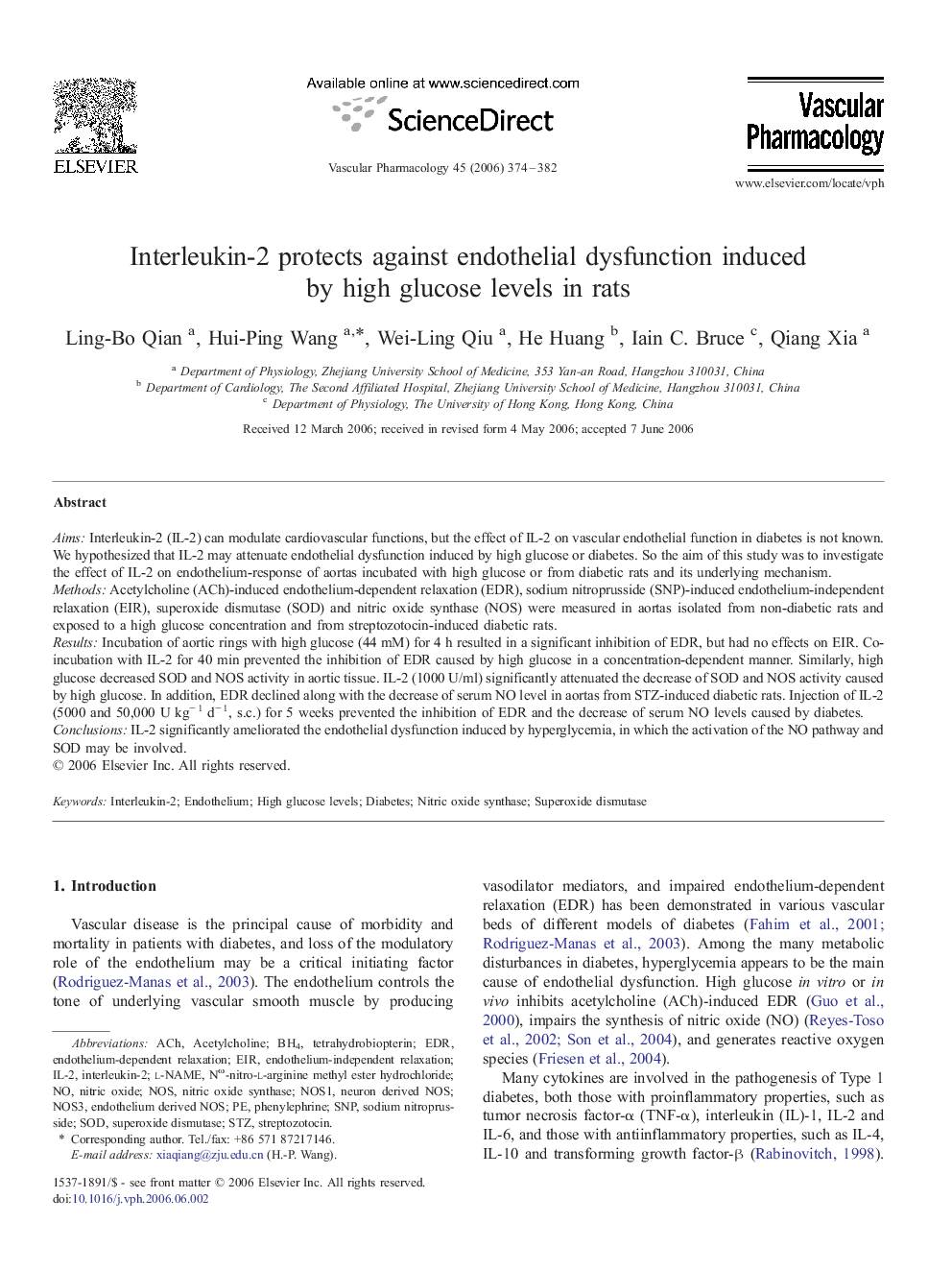| Article ID | Journal | Published Year | Pages | File Type |
|---|---|---|---|---|
| 2575050 | Vascular Pharmacology | 2006 | 9 Pages |
AimsInterleukin-2 (IL-2) can modulate cardiovascular functions, but the effect of IL-2 on vascular endothelial function in diabetes is not known. We hypothesized that IL-2 may attenuate endothelial dysfunction induced by high glucose or diabetes. So the aim of this study was to investigate the effect of IL-2 on endothelium-response of aortas incubated with high glucose or from diabetic rats and its underlying mechanism.MethodsAcetylcholine (ACh)-induced endothelium-dependent relaxation (EDR), sodium nitroprusside (SNP)-induced endothelium-independent relaxation (EIR), superoxide dismutase (SOD) and nitric oxide synthase (NOS) were measured in aortas isolated from non-diabetic rats and exposed to a high glucose concentration and from streptozotocin-induced diabetic rats.ResultsIncubation of aortic rings with high glucose (44 mM) for 4 h resulted in a significant inhibition of EDR, but had no effects on EIR. Co-incubation with IL-2 for 40 min prevented the inhibition of EDR caused by high glucose in a concentration-dependent manner. Similarly, high glucose decreased SOD and NOS activity in aortic tissue. IL-2 (1000 U/ml) significantly attenuated the decrease of SOD and NOS activity caused by high glucose. In addition, EDR declined along with the decrease of serum NO level in aortas from STZ-induced diabetic rats. Injection of IL-2 (5000 and 50,000 U kg− 1 d− 1, s.c.) for 5 weeks prevented the inhibition of EDR and the decrease of serum NO levels caused by diabetes.ConclusionsIL-2 significantly ameliorated the endothelial dysfunction induced by hyperglycemia, in which the activation of the NO pathway and SOD may be involved.
